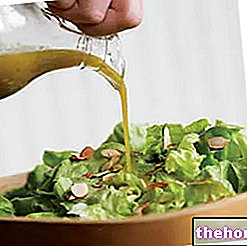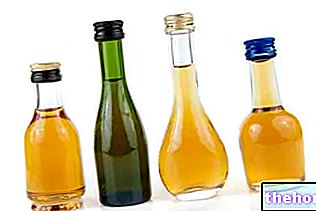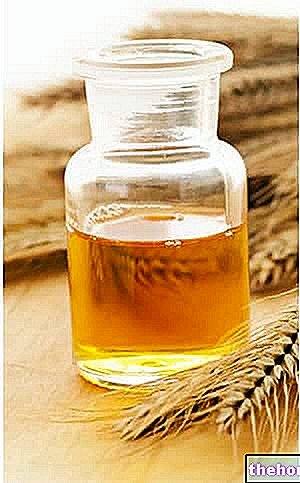Linseed oil is a seed oil used in human nutrition mainly due to its content in essential fatty acids (AGE / PUFA).
Nutritional values
What is linseed oil?
Flax is a plant belonging to the family of Linaceae originally from the Middle East, i.e. the current Iran, Iraq, Syria, etc. There are more than 200 different varieties, but the one grown for industrial purposes is the Linum usitatissimum L., which further differs into two types:
- Oil flax: with a low and more rigid plant, it has large and brown seeds (from which the oil is extracted), and prefers warm and sunny climates.
- Fiber flax: with a tall plant and an elastic stem, it has small seeds and prefers mild, ventilated climates without temperature changes

Extraction method
Linseed oil is produced in a few steps; the first is the squeezing, a process that allows the extraction of the lipid fraction together with the aqueous one. The most suitable method is the cold one, that is, it does not cause a temperature rise higher than 27-30 ° C; the higher quality of this technique compared to the others consists in maintenance of the nutritional properties of linseed oil (integrity of the essential fatty acid content). Subsequently, various filtrations are adopted, useful for the separation of unwanted components from the finished product.
There is a NON-edible form of cooked linseed oil used in the paint industry.
NB. Until the first half of the twentieth century, flax seeds needed a mild roasting, as they are coated with a mucilage that hinders the pressing; today this process SHOULD NOT be used anymore ... just as clay filtration should be obsolete. However, when buying linseed oil, it is always advisable to investigate its origin and production method.
Warnings for use
Linseed oil MUST be a high quality product and MUST be used raw on food. Linseed oil contains essential fatty acids (AGE / PUFA) and tocopherols (vitamin E), essential lipophilic components useful for maintaining cellular functions.
Vitamin E is a powerful antioxidant, while AGEs are coagulants and anti-coagulants, blood pressure regulators, triglyceridemia regulators, cholesterol regulators, components of cell membranes, etc. However, their molecular integrity in "linseed oil is subject to easy deterioration; this depends above all on their THERMOLABILITY" (sensitivity to heat) and, despite the presence of vit. And, from their sensitivity to oxidation and rancidity. It follows that linseed oil, in addition to not being suitable for cooking and preparing for the seasoning of meats and vegetables, is NOT a valid alternative to olive oil for preserving food in jars ... on the contrary ! Linseed oil requires good conservation.
It is advisable to keep linseed oil in:
- Containers of dark glass, not plastic, possibly metal (in order to prevent the passage of light rays)
- Hermetic containers (in order to prevent the passage of air and oxygen inside them)
- Small containers (in order to consume it in a short time reducing its exposure to oxygen)
- Thermally controlled and NOT hot environments (in order to slow down the rancidity processes induced by heat)
NB. Linseed oil is also considered a food supplement (a perfect example of a functional food); in the event that you choose to consume it to facilitate the achievement of the daily amount of omega3, it is advisable to take it in the same portions as any seasoning oil THERE ARE NO CONTRAINDICATIONS, on the contrary! Its content in omega3 strongly higher than that of omega6 contributes to the improvement of the ratio between the two essential fatty acids which, from a health point of view, should prefer the former over the latter.
Ratio omega3: omega6 recommended 1: 3 - Ratio omega3: omega6 linseed oil 1: 0.24
Other Foods - Oils and Fats Peanut Butter Cocoa Butter Butter Greaves Wheat Germ Animal Fats Margarine Vegetable Cream Tropical Oils and Fats Frying Oils Vegetable Oils Peanut Oil Borage Oil Rapeseed Oil Krill Oil Poppy Seed Oil Seed Oil Pumpkin Avocado oil Hemp oil Safflower oil Coconut oil Cod liver oil Wheat germ oil Linseed oil Macadamia oil Corn oil Almond oil Hazelnut oil Walnut oil Olive oil Palm oil fish Rapeseed oil Rice oil Pomace oil Seed oil Soybean oil Grapeseed oil Extra virgin olive oil Sesame seeds and sesame oil Lard OTHER ARTICLES OILS AND FATS Categories Food Alcoholics Meat Cereals and derivatives Sweeteners Sweets Offal Fruit Dried fruit Milk and Derivatives Legumes Oils and Fats Fish and fishery products Salami Spices Vegetables Health recipes Appetizers Bread, Pizza and Brioche First courses Seconds pi acts Vegetables and Salads Sweets and Desserts Ice creams and sorbets Syrups, liqueurs and grappa Basic Preparations ---- In the Kitchen with leftovers Carnival recipes Christmas recipes Light diet recipes for Celiacs Recipes for Diabetics Recipes for Holidays Recipes for Valentine's Day Recipes for Vegetarians Protein Recipes Regional Recipes Vegan Recipes




























